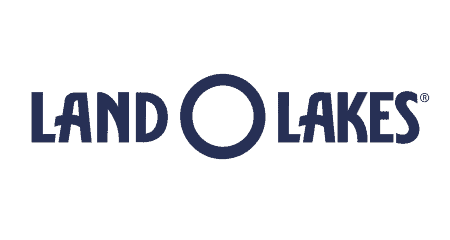In 2021, Vesper started a collaboration with Marex Solutions, a division of Marex Financial and is Marex’s hedging and investment solutions arm. The collaboration includes a European Butter and Skimmed Milk Powder (SMP) Futures and Swaps Pricing widget located on the Vesper dashboard.
Lucian Gladstone who covers the Dairy market will tell you more about Marex in this case study and about the importance of price risk management.
What exactly does Marex do and what is your role within the company?
The Marex Group is a diversified global financial services platform, providing essential liquidity, market access and infrastructure services to clients in the commodities, energy, and financial markets. Headquartered in London with 22 offices and over 1,100 employees worldwide covering EMEA, APAC, and North America, Marex provides comprehensive coverage across five core services: Market Making, Execution and Clearing, Hedging and Investment Solutions, Price Discovery, and Data and Advisory. Marex Hedging and Investment Solutions was set up in 2017 to help corporations hedge their risk on the volatility of commodity and currency prices. In addition to our standard Dairy Futures and Swaps offering, we design and create tailored risk management solutions for farmers, cooperatives, traders, exporters, refiners, and consumers.
I joined the Marex Solutions Dairy team in 2020 after several years working in the financial services sector, but as a teenager I worked on a dairy farm in France during my holidays to help improve my French. I had previously covered various different commodities, so when the chance came to help develop the dairy offering at Marex Solutions it was an opportunity I could not resist. My role is to provide market access and source liquidity, but education is also an important component of this. The use of derivatives in the dairy market in order to manage risk is relatively new compared to other commodities. In addition, the Marex Dairy team is a very useful source of information as we are constantly interacting with many different market participants.
“Price risk management using derivatives allows market participants to hedge their price exposure on the dairy products they are buying and selling on a short to long-term basis.”
What does risk management entail and what is the role Marex plays in that area?
Dairy markets are extremely volatile, exaggerated by reductions in governmental support programmes and trade restrictions. Dairy prices are exposed to unpredictable drivers such as weather, which can have a significant effect on market prices.
Price risk management using derivatives allows market participants to hedge their price exposure on the dairy products they are buying and selling on a short to long-term basis. For example, a producer who receives a request from a customer wanting to buy butter at a fixed price for delivery in 10 months’ time would be reluctant to give a price without hedging, as the price could move up substantially in the interim causing a loss on the sale price. However, by buying a butter future and selling the physical butter at a fixed price, the producer can protect themselves against any adverse price movements and lock in their margin.
Dairy markets face increasingly more complex and challenging risks: market volatility due to decreased regulation and trade restrictions, geopolitical risks, climate awareness, and currency exposure. We work with our dairy clients in managing their exposure to that volatility as well as taking advantage of the new opportunities that the global marketplace presents.
“Marex sources liquidity and acts as a gateway facilitating access to the market and can also provide credit lines to finance the transactions.”
How does risk management exactly work? Does Marex facilitate people through the Exchange or through over-the-counter (OTC) derivatives?
We provide our dairy clients with the tools they need to manage their risk exposure. The dairy desk offers both Exchange-Traded Derivatives (ETD) and OTC derivatives in European markets (EEX), Asia-Pacific (SGX – formerly NZX), and in the US (CME). Both ETD and OTC have their advantages but in different ways. For example, when trading exchange-traded derivatives the contract is standardised whereas almost every aspect of an OTC contract can be tailored. When trading Futures, the advantage is that you have the Exchange as the counterpart. With OTC derivatives there are also advantages, such as the financing available and certain contracts that are not offered on exchanges (for example BLE Milk, Cheese, or Whole Milk Powder in Europe).
The principal tools being used in dairy hedging are swaps, futures, and options. Swaps and futures allow you to participate one-to-one in the underlying market to offset your exposure.
Options give the buyer the right but not the obligation to buy (call option) or sell (put option) a product (for example butter or SMP) at an agreed price and date in the future. In exchange, the option buyer pays a premium (similar to an insurance premium) to the option seller.
Marex sources liquidity and acts as a gateway facilitating access to the market and can also provide credit lines to finance the transactions.
Risk management is a relatively new concept in the dairy industry. Could you explain how people can use Marex (and the Marex widget on Vesper) and how Marex is looking to change the game?
There are several benefits of using dairy derivatives. Amongst them are managing price risk for profit stability, accurate budgeting forecasting, and strategic decision making.
For example, a farmer has little forward guidance on the price for the milk they are producing as this is calculated after delivery. This creates uncertainty as to whether they can cover loan payments or other costs for expansion. By using futures, the farmer can guarantee the milk price they receive for at least a part of their production.
On the consumer side, a bakery buying thousands of tonnes of butter every year to make croissants will have a budget. If the butter price increases by 50 percent, the bakery will struggle to keep up with their procurement budget. By using derivatives, the bakery can manage their butter price exposure for up to three years in advance and stay in control of their budget forecast.
With our expertise and technology powered by our Agile platform, we seek to transform the dairy risk management market through our service, flexibility, and transparency.
“In an increasingly data-driven world, having the right information to hand in an accessible format at the right time is essential.”
How does Vesper facilitate Marex in adding benefits to users and others?
I believe Vesper can bring transparency to what has historically been a very opaque market. In an increasingly data-driven world, having the right information to hand in an accessible format at the right time is essential. Anyone who makes purchasing, sales, or strategic planning decisions and has current and historical data as well as the ability to manage the prices that they will receive in the future, will be in a strong position to make the right choice.

How does someone get started in educating themselves about risk management?
A good starting point is to look at the daily price indications for butter and SMP that we publish on the Vesper platform. This allows Vesper users to gain insights on current opportunities in the futures market and reflect on how they could be implemented in their business. In addition, by working with the team at Marex Solutions they can have access to the market to trade on those prices.
The dairy team at Marex Solutions is also always open to help explain and educate businesses on the different risk management tools available. We regularly work closely with companies to help and advise them on implementing risk management strategies in their business.
In the future, we are looking to build on our collaboration with Vesper by implementing an educational feature, which will give Vesper users access to information on risk management tools and the ways to use them in their day-to-day business.
“I think over the next few years, the demand for risk management tools will grow increasingly in Europe. We are already seeing the traded volumes growing exponentially year-on-year.”
We also believe that it will be a great advantage to many, as few people use risk management tools to hedge their risk yet.
This remains an underdeveloped market in Europe. It is not being used as much as in other markets, so there is still a lot of room for growth and development. We see it in the US, where the use of risk management tools is far more widespread. I think over the next few years, the demand will grow increasingly in Europe. We are already seeing the traded volumes growing exponentially year-on-year.
Speaking about the US, the CME covers many more products for the US than for Europe. Do you think that there is a demand in Europe for other products (using the Vesper Price Index for example) such as cheese or whey, which are now displaying record prices?
Certainly. At the moment, there is a lot of interest in the three contracts being traded on EEX: butter, SMP, and whey. There is also demand for liquid milk contracts, especially BLE milk. The same goes for cheese. The cheese market is huge in Europe, arguably bigger than butter and SMP. This market is the next big project for European dairy derivatives.
The CME is far more widely traded than the EEX. Why do you think that is?
I believe there are a number of reasons behind this. Firstly, dairy contracts on the CME have been around far longer, giving the market more time to establish itself. Structurally the cash and future markets are also far more integrated than in Europe. I think it is also because dairy derivatives in Europe are a relatively new product, which many people are not necessarily familiar with. A producer for example that wants to change the way they have been doing business for the past 30 years, first has to implement the changes in their business structure. It is something that takes time to put in place but will certainly come in the future. People have to get used to it first and need to understand how the product works. Bringing transparency and modernisation to the dairy market is something I see huge value in.

Interested in learning more about using derivatives to cover price risk? Lucian Gladstone is at your disposal: dairy@marexsolutions.com.
For more information visit www.marex.com





















